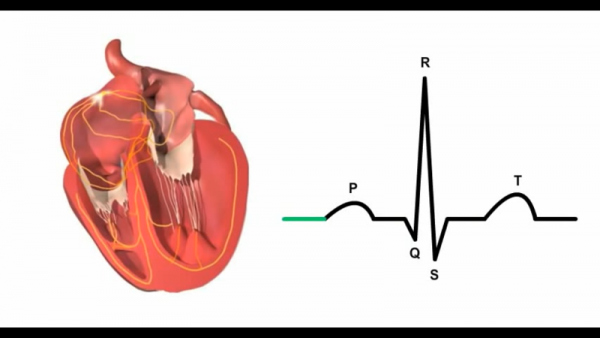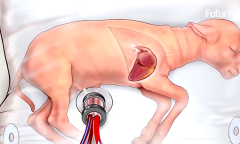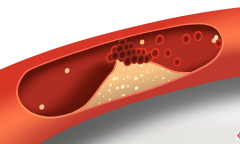By KM Diaz, | May 04, 2017

P-QRS-T represents various activations in the heart. (YouTube)
Researchers have made a significant discovery about a new source of electrical instability in the heart, which may eventually lead to the development of new methods to prevent and predict life-threatening cardiac fibrillation.
A regular heartbeat is controlled by electrical signals which start deep within the heart and move into the muscular organ in normal waves to stimulate the coordinated contraction of muscle fibers.
Like Us on Facebook
However, when the waves are interrupted by blockages in electrical conduction, signals can be obstructed that creates chaotic spiral-shaped electrical waves to interfere with one another, and the electrical disturbance causes the heart to beat quickly and ineffectively, leading to death.
Instabilities at the cellular level, particularly change in the duration of every electrical signal are a major concern in forming chaotic fibrillation. The U.S. Food and Drug Administration and researchers from the Georgia Institute of Technology analyzed the electrical signals in the hearts of an animal model and discovered a new factor - the changing amplitude of the action potential - that can also cause a serious electrical disturbance within the heart.
Flavio Fenton, a professor at Georgia Institute of Technology, says that the discovery could enable them to know how other life-threatening instabilities manifest in the heart. The new mechanism could tell and predict if fibrillation will occur, depending on physiological parameters.
The voltage signal that commands the electrically-driven heartbeat is outlined by doctors on the surface of the animal's body using electrocardiogram technology - defined by five main sections (P-QRS-T) - which represents various activations in the heart.
T-waves signal the back portion of each wave, happen during an end of each heartbeat. According to the researchers, irregularities in the T-waves indicate an increased risk of a life-threatening heart rhythm. They examined the cellular action potential amplitude, which is measured by sodium ion channels and part of the natural regulatory system of the heart.
Sodium ions streaming within the cells increase the concentration of cations - a positive charge - leading to depolarization. The action potential of the cell extends to its resting level, and the sodium channels suddenly stop at the peak of the action potential. Researchers linked dynamic changes in the amplitude of the action potential with the onset of fibrillation and conduction block.
Diana Chen, the first author of the study and a Georgia Tech graduate student, explains that a person has one wave with a long amplitude, and then another wave with a short amplitude. However, when the short amplitude turns too short, the following wave will not be ready to deliver. Normally, waves traveling towards the heart move together to keep an active heartbeat.
The new finding will allow doctors to properly predict who could be at risk of fibrillation, how electrical turbulence forms, and could lead to the development of new drugs to treat and prevent the condition.
-
Use of Coronavirus Pandemic Drones Raises Privacy Concerns: Drones Spread Fear, Local Officials Say

-
Coronavirus Hampers The Delivery Of Lockheed Martin F-35 Stealth Fighters For 2020

-
Instagram Speeds Up Plans to Add Account Memorialization Feature Due to COVID-19 Deaths

-
NASA: Perseverance Plans to Bring 'Mars Rock' to Earth in 2031

-
600 Dead And 3,000 In The Hospital as Iranians Believed Drinking High-Concentrations of Alcohol Can Cure The Coronavirus

-
600 Dead And 3,000 In The Hospital as Iranians Believed Drinking High-Concentrations of Alcohol Can Cure The Coronavirus

-
COVID-19: Doctors, Nurses Use Virtual Reality to Learn New Skills in Treating Coronavirus Patients













